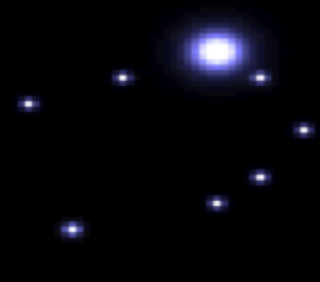Splash art originated in the 1940s in comics, where the term referred to a full page of visuals at the front of a book. Pages were designed to engage the reader's imagination along the lines of the comic's broader concept, while standing independent from the narrative. In the late 1990s, when the widespread use of the application Flash opened up new possibilities for animation and interactive media, the idea of the splash page migrated to web design. Online splash art brought visual excitement to a webpage when low modem speeds made it impractical to post large or moving images amid a site's textual content.
Rhizome introduced splash pages to its web site in 1998 in order to display artwork with greater immediacy....
Rhizome introduced splash pages to its web site in 1998 in order to display artwork with greater immediacy....
Launch Project 
 splash art from STARRYNIGHT, 1999
splash art from STARRYNIGHT, 1999
About
Starry Night was one of several alternate interfaces that Alex Galloway, Martin Wattenberg, and Mark Tribe developed for the archive of Rhizome's mailing list. Each star on the map indexed a text, and its brightness would be determined by the number of times the text was read, increasing with each page view. Like the splash project, Starry Night and other data visualization ideas for Rhizome's site aimed to harness the internet's visual potential to present information in ways unlike the text-heavy print models usually translated into online interfaces. Starry Night was never completed, but the eponymous splash page is a reminder of those efforts.
Alex Galloway:
http://cultureandcommunication.org/galloway
Mark Tribe:
http://http://www.marktribe.net
Martin Wattenberg:
http://www.mw2mw.com
Alex Galloway:
http://cultureandcommunication.org/galloway
Mark Tribe:
http://http://www.marktribe.net
Martin Wattenberg:
http://www.mw2mw.com